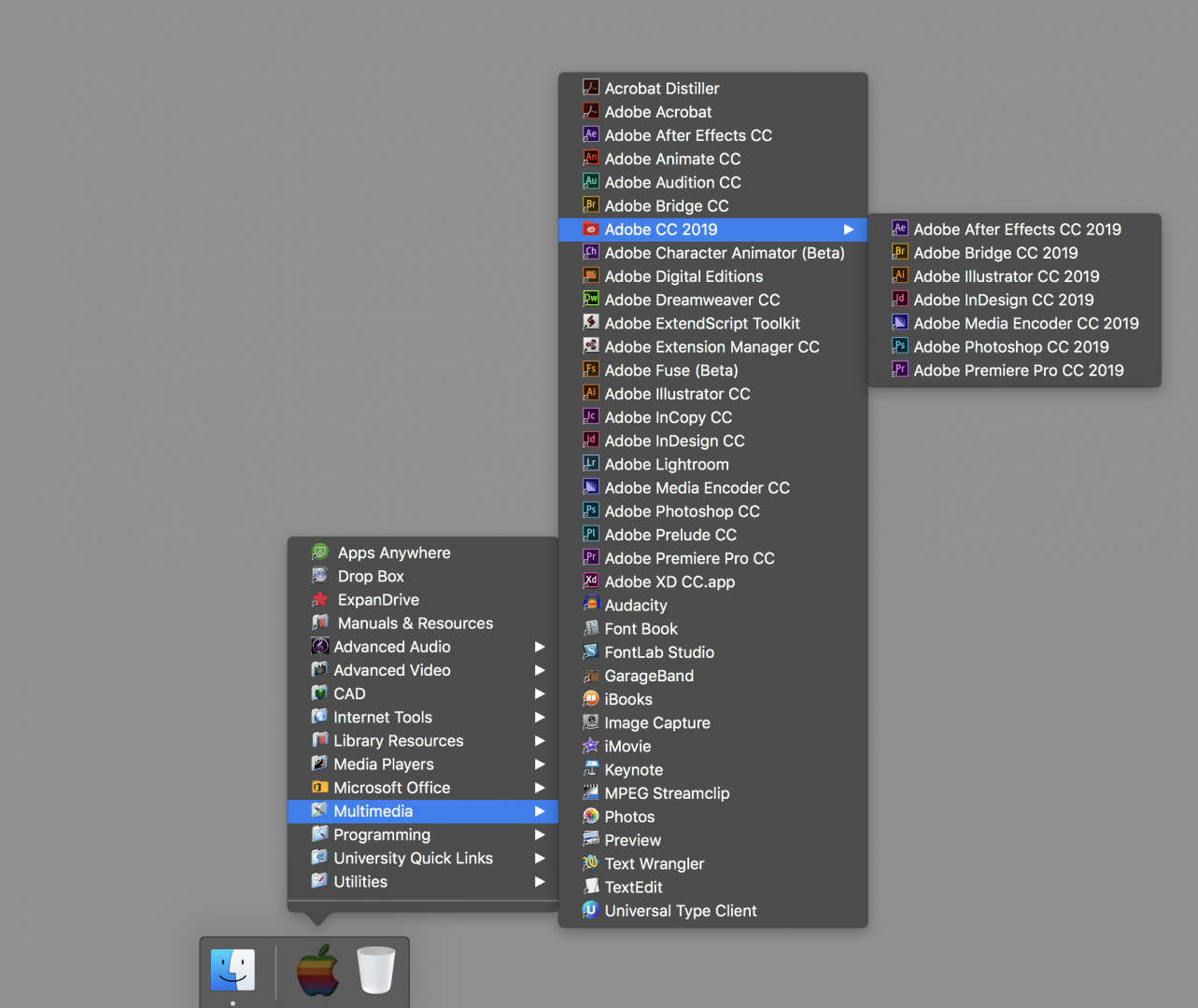“Adobe Creative Cloud is the designer’s kitchen. Be it print, web, screen, video, or audio there’s an app that’s optimized for each.” Jonathan Pimento, Senior Product Manager, Adobe. Adobe Experience Cloud products. Adobe Experience Cloud is a collection of applications and services built on the first platform specifically designed for unmatched customer experiences, giving you the most comprehensive tools for insights, content, engagement, and more. Adobe is changing the world through digital experiences. We help our customers create, deliver and optimize content and applications. Experience Platform, the foundation of Experience Cloud products, is an open system that transforms all your data — Adobe and non-Adobe — into robust customer profiles that update in real time and uses AI-driven insights to help you to deliver the right experiences across every channel. The Creative Cloud desktop app syncs up to 1 GB over your quota from any device. After that, new files no longer sync, and you're notified that you are over quota. A red exclamation point indicates files that can't be synced. You can still move, rename, or delete files.
Cloud documents are documents created from certain Creative Cloud apps, such as Adobe Photoshop, Adobe Illustrator, Adobe XD, Adobe Fresco, and Adobe Aero. These documents are native to the cloud and have unique advantages, which help you access them seamlessly from apps that support them. With cloud documents, your work is always updated, across every device, wherever you are.
For an introduction to cloud documents, see What are cloud documents.
Yes, you can use your cloud documents offline. You must open a cloud document before you can use it offline. For more information, see Working offline with cloud documents.

All cloud documents are available from the Home screen of your Creative Cloud app, even when you are offline. Once you are back online, your cloud documents are synced and the most recent version is available on all your devices and the Creative Cloud website.
Can I save cloud documents to Creative Cloud Libraries?
You can't save cloud documents to Creative Cloud Libraries. Cloud documents are a new native file type that are accessible online or offline directly from within your app or through the Creative Cloud website. For more information, See Difference between cloud documents and other Creative Cloud files.
Can I share and collaborate on a cloud document?
You can collaborate with your teammates by inviting them to edit cloud documents directly from Photoshop, Illustrator, Adobe XD, and Adobe Fresco or the Creative Cloud website.
For Photoshop, Illustrator, Adobe Aero, and Adobe Fresco, you can generate a link to your cloud document and share it with other stakeholders. You can share the files from the Creative Cloud website and the Creative Cloud desktop app. (Select the file and click the Share/Get link icon .)
What is the difference between cloud documents and other Creative Cloud files?
See Difference between cloud documents and other Creative Cloud files.
You can organize all your assets stored in the cloud using the Creative Cloud website or through the Creative Cloud desktop app. Find options to manage your files in the Your work tab:
Adobe Cloud Support
Your cloud documents are stored in Creative Cloud. You can easily access them from with in your app, on the web or from the Creative Cloud desktop app.
- From within app: On the Home screen, select either Cloud documents or Your work > Cloud documents.
- On the web: Go to https://assets.adobe.com/cloud-documents.
- From the Creative Cloud desktop app: On the Your work tab, select the Cloud files icon.
With cloud documents, you don't have to keep saving your documents; your documents are automatically saved as you work on them. A new version is created each time a document is auto-saved. You can easily find and restore previous versions from the Your work section in the Creative Cloud website.
Can I convert a non-cloud document to a cloud document?
Yes, you can easily save or convert a non-cloud document as a cloud document. See Create or convert files to cloud documents.

Is there a limit to the number of cloud documents I can save?
Adobe Cloud Student
No, you are only limited by the amount of Creative Cloud storage you have.
Do cloud documents shared with me count toward my Creative Cloud storage quota?
Cloud documents shared with you don't count toward your storage quota. Only your saved cloud documents are included in your storage quota.
| Issue | Workaround |
When working with Cloud documents in Photoshop desktop, you may encounter the following issues or errors:
| Creative Cloud sync requires an update or is not running correctly. For complete troubleshooting steps, see Unable to create or save a cloud document. |
| When saving a Photoshop file as cloud document, the dialog to maximize compatibility is not displayed. | This is an expected behavior. The dialog to maximize compatibility is displayed only while saving a document to computer's your local drive. |
| You can't export a cloud document as PSD when the document size exceeds 2 GB. | Save a copy as a TIFF or as a PSB file. |
| You encounter an error when working with cloud documents. | See Solve Cloud Document Errors to find the solution for your cloud document error code |
More like this
You can access Adobe Document Cloud from https://documentcloud.adobe.com. Sign in with your Adobe ID and password, or with your social (Facebook or Google) account. You can access Adobe Document Cloud services and also download the latest Acrobat DC desktop and mobile apps.
You can access your files on Document Cloud, using your web browser, the Acrobat DC and Acrobat Reader DC desktop apps, or the Acrobat DC mobile app.
Adobe Cloud Student

Adobe Cloud Subscription
To access your files, do one of the following:
Adobe Clouds
- Using your browser, sign in to Adobe Document Cloud and click Documents in the top-menu bar of Adobe Acrobat home.
- In Acrobat DC or Acrobat Reader DC, choose Home > Document Cloud and then select a PDF document.
- In Acrobat Reader mobile app, choose Home > Document Cloud and then select a PDF document.
| To | See |
| Learn how to work with files using the Adobe Document Cloud website | Working with files |
| Learn how to open PDF files using Acrobat DC or Reader DC | Opening PDFs |
| Learn how to save PDF files using Acrobat DC or Reader DC | Saving PDFs |
| Learn how to add text, sticky notes, highlights, and other annotations to a PDF file | Add Comments |
| Learn how to share files and track them using Acrobat DC | Share and track files |
| Learn how to share and track files using the Adobe Document Cloud website | Share and track PDFs online |